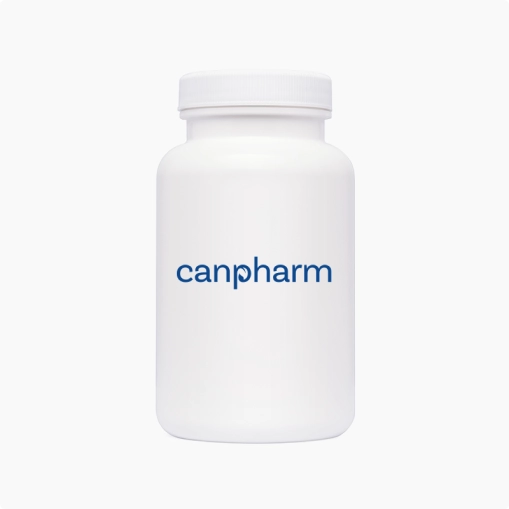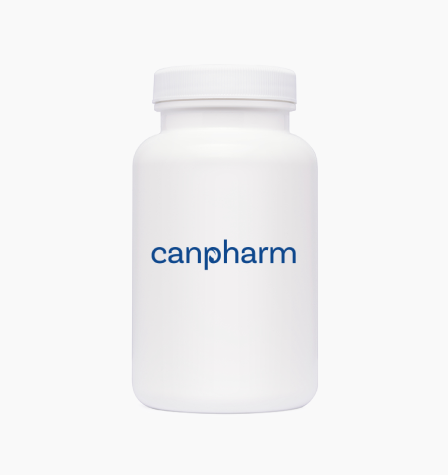
-
Description
-
Reviews (0)
-
Related Products
-
Related Conditions
Fact Table
| Fact Table | |
|---|---|
| Formula | C9H13N2O2 |
| License | Prescription only (Rx-only, cholinesterase inhibitor) |
| Bioavailability | Low (10–20?%) after oral dosing |
| Legal status | Rx-only (US, Canada, others) |
| Chemical Name | 3-[(dimethylcarbamoyl)oxy]-1-methylpyridinium (pyridostigmine bromide) |
| Elimination half-life | Oral: ~1.8–3?hours (prolonged in renal impairment) |
| Dosage (Strength) | Extended-release tablet: 180?mg; dosing 180–540?mg once or twice daily (not to exceed 1.5?g/day) |
| Pregnancy | Use if clearly needed; considered first-line in myasthenia gravis during pregnancy |
| Brands | Mestinon?SR (Timespan), also conventional Mestinon; Regonol (IV) |
| Protein binding | Not specified (minimal/systemic) |
| PubChem CID | 4991 |
| MedlinePlus | a682229 |
| ChEBI | Not assigned |
| ATC code | N07AA02 |
| DrugBank | DB00545 |
| KEGG | C07410 |
| Routes of administration | Oral extended-release tablet |
Mestinon SR is an extended-release oral formulation of pyridostigmine bromide, an acetylcholinesterase inhibitor used primarily in the symptomatic treatment of myasthenia gravis. By inhibiting the breakdown of acetylcholine at neuromuscular junctions, pyridostigmine enhances cholinergic transmission and improves muscle strength in affected individuals. The sustained-release (SR) formulation allows for prolonged therapeutic action, reducing the frequency of dosing while maintaining symptom control.
Directions
Mestinon SR should be administered orally, with dosage individualized based on patient response and clinical condition. The typical adult dose ranges from 180 mg to 540 mg per day in divided doses, generally every 6 to 12 hours. Tablets should be swallowed whole and not chewed or crushed. Dosage adjustments should be made under the supervision of a healthcare professional, particularly during periods of increased physical activity, illness, or stress, which may alter disease severity.
Ingredients
Each Mestinon SR tablet contains 180 mg of pyridostigmine bromide as the active ingredient. Inactive ingredients may include ethylcellulose, magnesium stearate, sucrose, and other excipients designed to ensure sustained release and consistent absorption. The formulation is designed for gradual drug release to extend its therapeutic effect.
Cautions
Caution is advised in patients with asthma, epilepsy, bradycardia, hypotension, or recent coronary occlusion due to the cholinergic effects of pyridostigmine. Use should be carefully monitored in individuals with renal impairment, as the drug is primarily excreted by the kidneys. Mestinon SR may interact with other medications that affect neuromuscular transmission, including antibiotics, anesthetics, and muscle relaxants. Patients should be monitored closely during initiation and any changes in dosage.
Contraindications
Mestinon SR is contraindicated in patients with known hypersensitivity to pyridostigmine bromide or any component of the formulation. It is also contraindicated in individuals with mechanical intestinal or urinary obstruction, as increased cholinergic activity may exacerbate these conditions.
Side Effects
Common side effects may include:
- Gastrointestinal discomfort (nausea, vomiting, diarrhea)
- Abdominal cramps
- Increased salivation
- Sweating
- Muscle twitching
- Miosis (pupil constriction)
Less common but potentially serious side effects include:
- Bradycardia
- Bronchospasm
- Hypotension
- Seizures
- Signs of cholinergic crisis (e.g., excessive salivation, weakness, respiratory distress)
Patients experiencing signs of overdose or cholinergic crisis should seek immediate medical attention.
Frequently Asked Questions about Mestinon SR (Pyridostigmine)
What is Mestinon SR used for?
Mestinon SR is an extended-release form of pyridostigmine, primarily used to treat the symptoms of myasthenia gravis, a chronic autoimmune neuromuscular disorder that causes weakness in the skeletal muscles.
How does Mestinon SR work?
Mestinon SR works by inhibiting the breakdown of acetylcholine, a neurotransmitter essential for muscle contraction. By preventing its breakdown, the medication improves nerve signal transmission to the muscles, enhancing muscle strength.
How is Mestinon SR different from regular Mestinon?
Mestinon SR is an extended-release formulation designed to provide a longer duration of action, allowing for less frequent dosing, usually every 6 to 12 hours. Regular Mestinon (immediate-release) requires more frequent dosing due to its shorter action.
How should Mestinon SR be taken?
Mestinon SR tablets should be swallowed whole and not crushed or chewed. They are usually taken 1 to 2 times daily, as prescribed. Dosing varies based on individual needs, and adjustments should only be made under medical supervision.
What are the common side effects of Mestinon SR?
Common side effects include abdominal cramps, diarrhea, increased saliva, muscle twitching, nausea, and sweating. These effects are related to increased cholinergic activity and may lessen with dosage adjustments.
Can Mestinon SR cause serious side effects?
Yes, serious side effects may include slow heartbeat, severe muscle weakness, bronchospasm, or signs of cholinergic crisis (excess acetylcholine), such as extreme muscle weakness or breathing difficulty. Immediate medical attention is needed if these occur.
Is Mestinon SR used for any conditions other than myasthenia gravis?
While its primary use is for myasthenia gravis, pyridostigmine may also be used off-label for certain types of orthostatic hypotension, postural tachycardia syndrome (POTS), and as a pretreatment for nerve agent exposure in military settings.
Can Mestinon SR be taken with other medications?
Mestinon SR can interact with other medications, particularly those that affect neuromuscular transmission, such as antibiotics (e.g., aminoglycosides), beta-blockers, or anticholinergic drugs. Always inform your healthcare provider about all current medications.
Who should avoid using Mestinon SR?
Mestinon SR should be used with caution in individuals with asthma, bradycardia, peptic ulcers, or urinary obstruction. It is not recommended for those with known hypersensitivity to pyridostigmine or any component of the formulation.
Is Mestinon SR safe during pregnancy or breastfeeding?
Mestinon SR may be used during pregnancy if clearly needed, but its safety has not been fully established. It does pass into breast milk in small amounts, so a healthcare provider should be consulted before use during pregnancy or breastfeeding.
